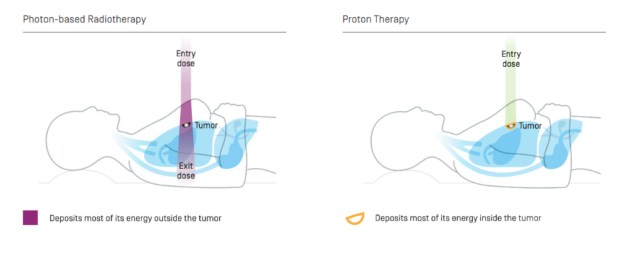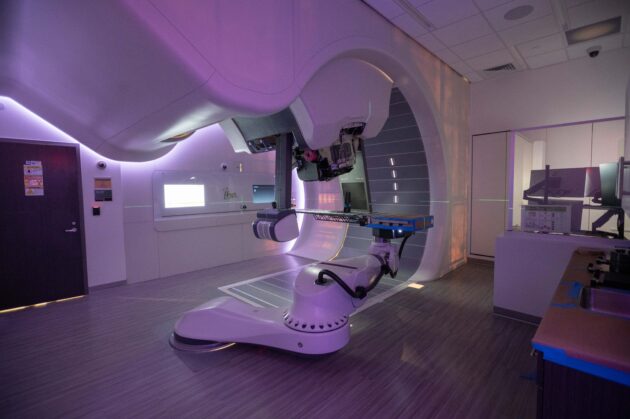The Most Innovative Cancer Treatment Available Today
Proton therapy is the most advanced form of radiation to treat cancer in the world today. Proton’s pin-point accuracy makes it an effective treatment for a wide range of solid tumors that are hard to reach with standard X-ray radiation.
Protons can be precisely targeted within millimeters of accuracy to deliver a high dose of radiation at maximum energy to a tumor. This fundamental physics characteristic reduces the amount of healthy tissue exposed to radiation and minimizes potentially debilitating side effects.

First of Its Kind
The Proton Center of Arkansas is the first of its kind in Arkansas and one of only 43 proton centers nationwide.
Benefits of Proton Therapy
- Protons can be conformed to the exact size, shape and depth of a tumor.
- Protons stop within the body and have virtually no exit damage beyond their target.
- Proton therapy is short, typically 30 minutes or less for each treatment, and recovery is faster.
- Fewer short and long term side effects that improves quality of life during and after radiation.
- Effective against recurring tumors even if radiation has been given before.
Cancers Treated
Cancers treated include:
- Brain cancer
- Breast cancer
- Esophageal cancer
- Eye cancer
- Head and neck cancer
- Liver cancer
- Lung cancer
- Lymphomas
- Pancreatic cancer
- Prostate cancer
- Sarcomas
- Spine cancer
Preferred Treatment for Children

Children with cancer face risks from radiation treatment that adults do not, including developmental delays, hormone deficiencies and effects on bone growth. Children can experience significant long-term side effects including secondary cancers in healthy tissues that received unnecessary radiation during treatment. Proton therapy can limit and reduce radiation doses to healthy tissues and organs while delivering curative doses to the cancer. This lowers a child’s risk of experiencing harmful long-term side effects.*
There is no minimum age for a child to be eligible for proton therapy. Children as young as 12 months have received proton therapy. This is a clinical decision made by pediatric radiation oncologist, hematologist/oncologist and the patient’s family.

Advanced X-ray Radiation Technology
Learn more about the advanced X-ray radiation technology offered at the Radiation Therapy Center.
Learn MoreProton Therapy Results
- 31% increase in disease control for aggressive tumors at the base of the skull at five years.2
- 5% increase in overall survival at two years for patients with hepatocellular carcinoma.3
- 6% increase in overall survival at five years in patients with head and neck paranasal sinus and nasal cavity cancer.4
- 10% increase in overall survival at five years in stage I-III esophageal cancer.5
- 9% increase in overall survival at five years in state II-III non-small cell lung cancer.6
- 5% higher five-year overall survival rate for intermediate risk prostate cancer patients.7
- Two-thirds reduction in acute side effects for patients treated with chemotherapy and radiation therapy together.8
2 Ares, C. et. al. IJROBP 2009 75(4) 1111-1118.
3 Sanford, NN et. al. IJROBP 2019 105(1): 64-72.
4 Patel, SH et. al. Lancet Oncology 2014: 15(9): 1027-38.
5 Xi, M et. al. IJROBP 2017: 99(3) 667-676.
6 Higgins, KA et. al. IJROBP: 2017: 97(1):128-137.
7 Arimura, T. et. al. Cancers 2018: 10(4):116.
8 Baumann, BC et. al. JAMA Oncology 2020: 6:237-246.
